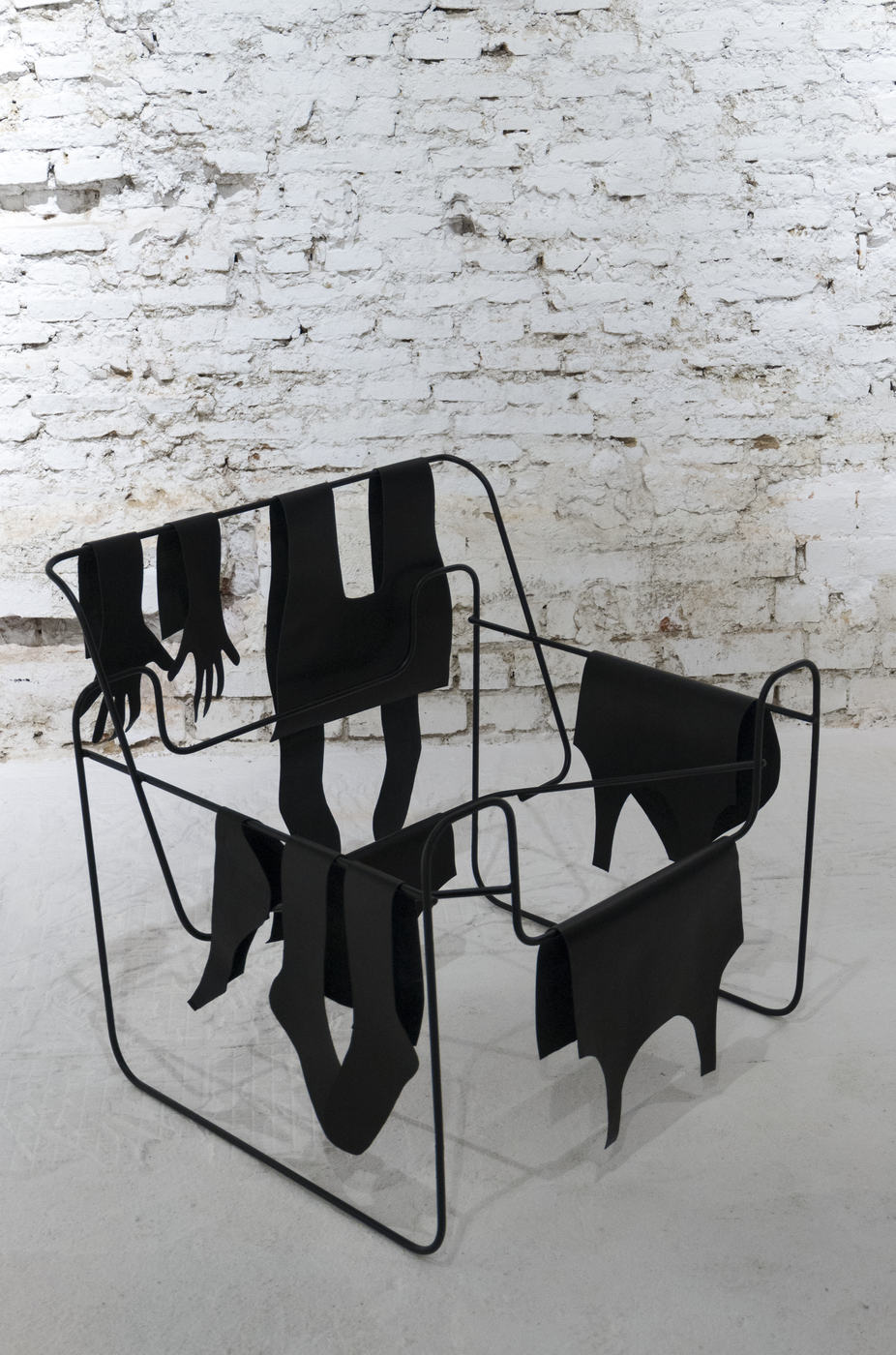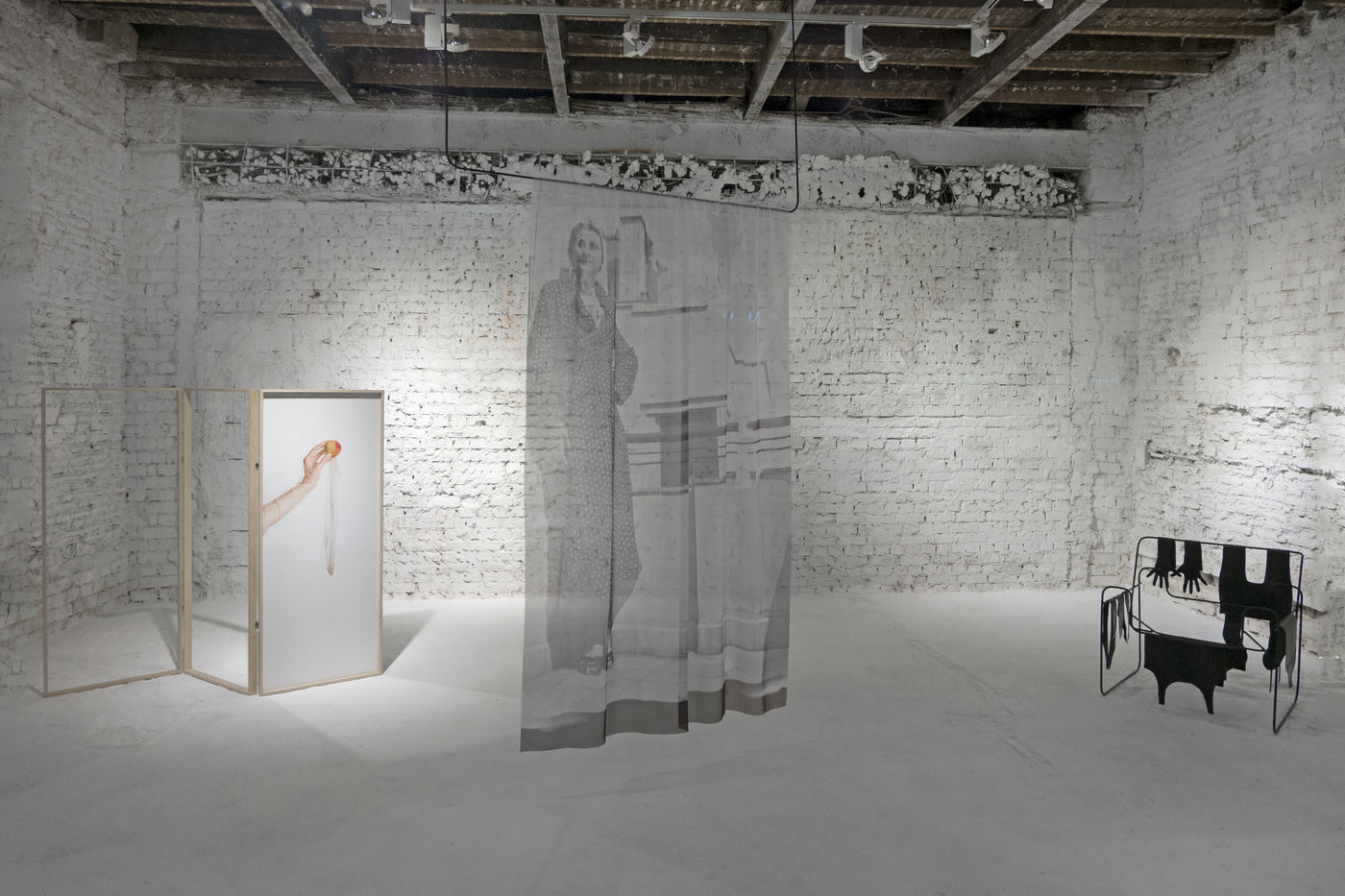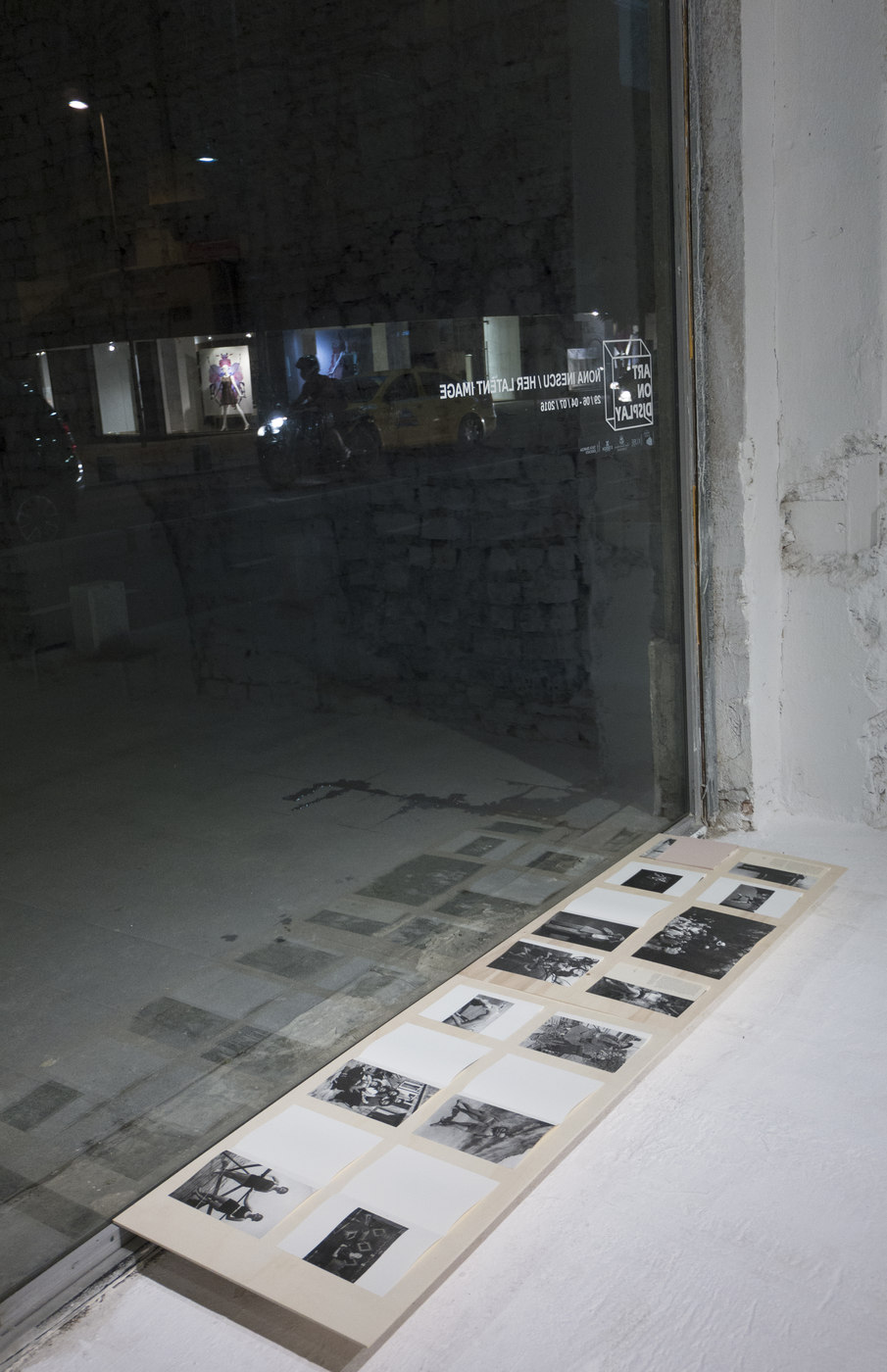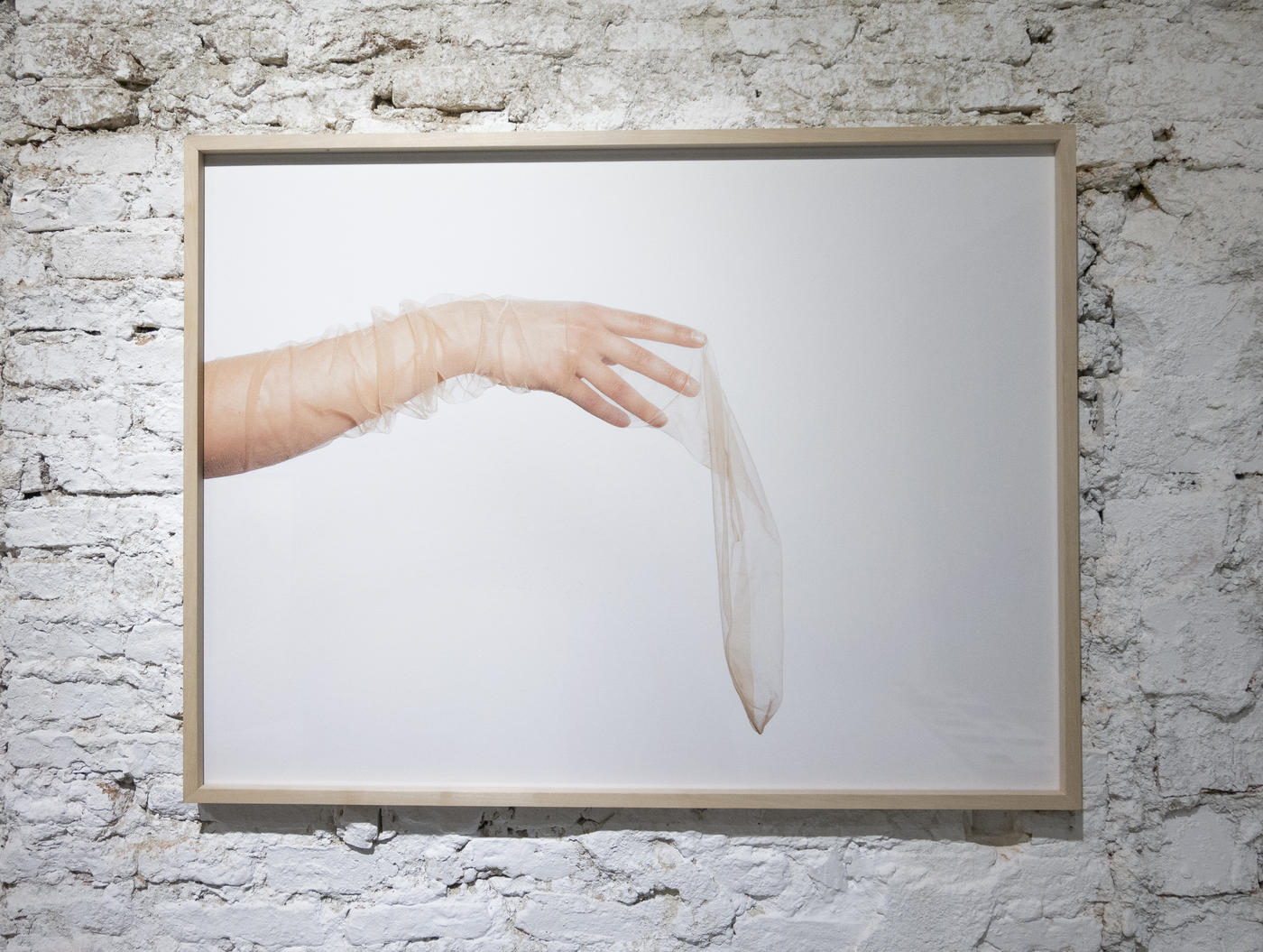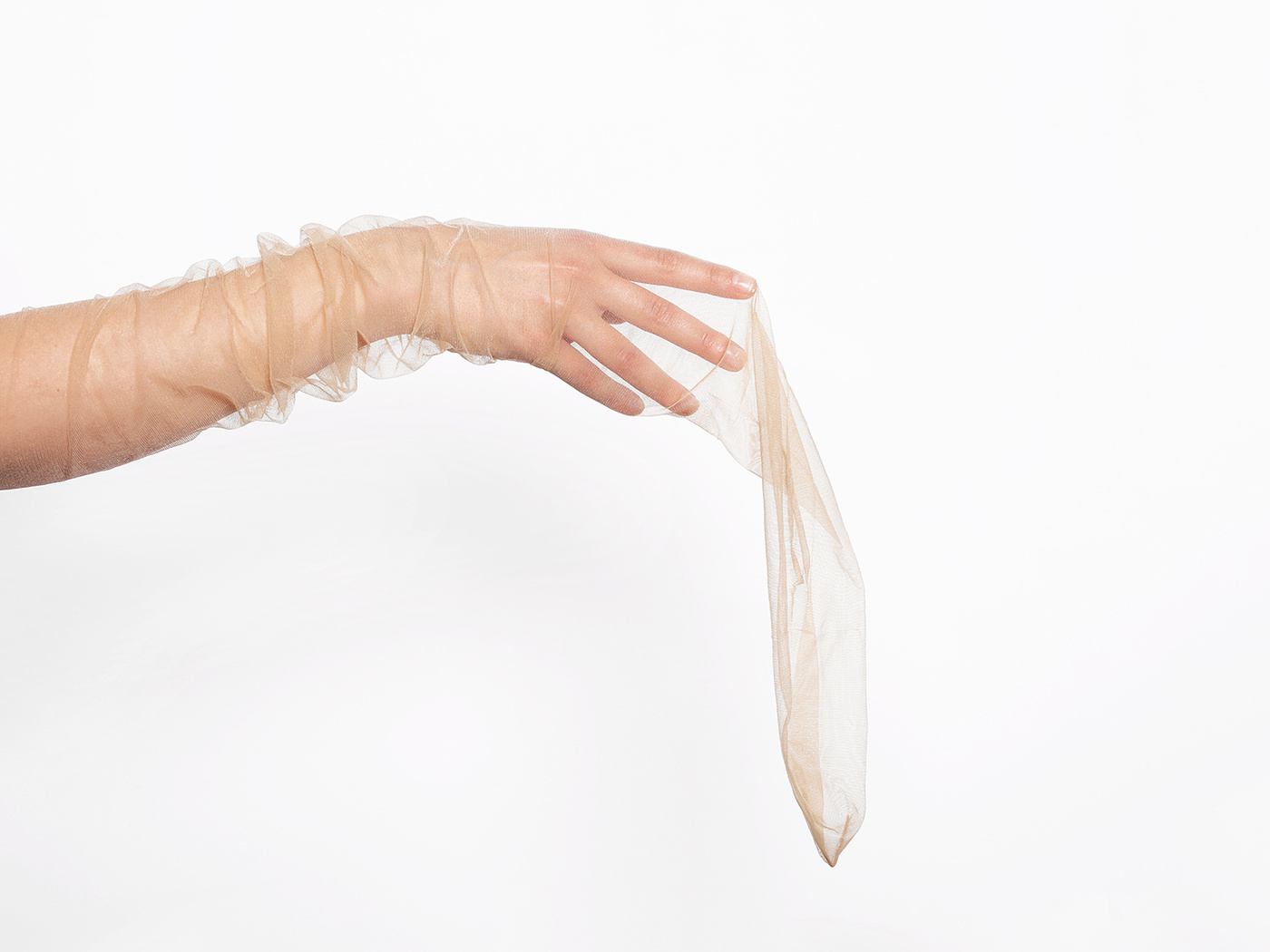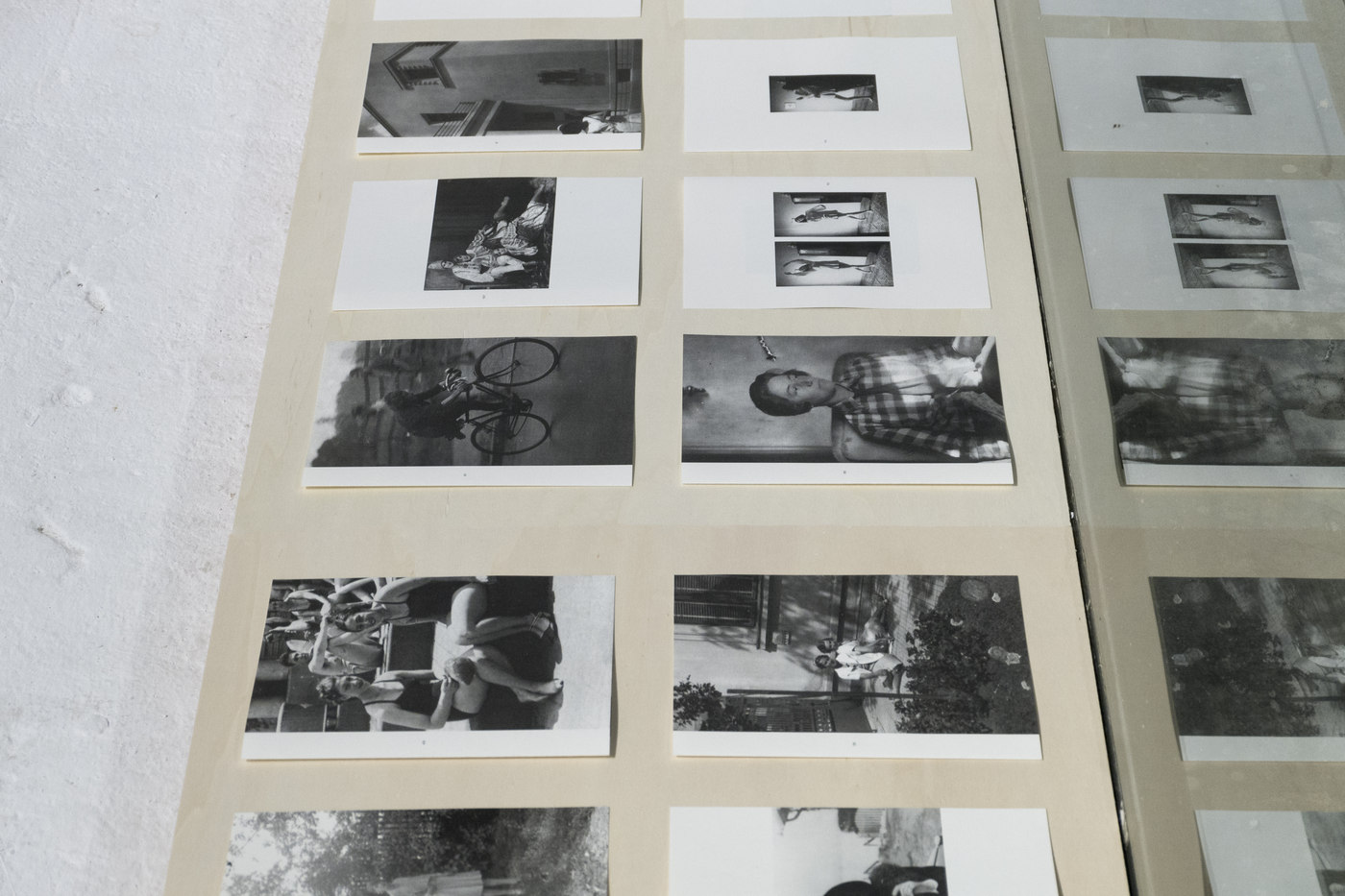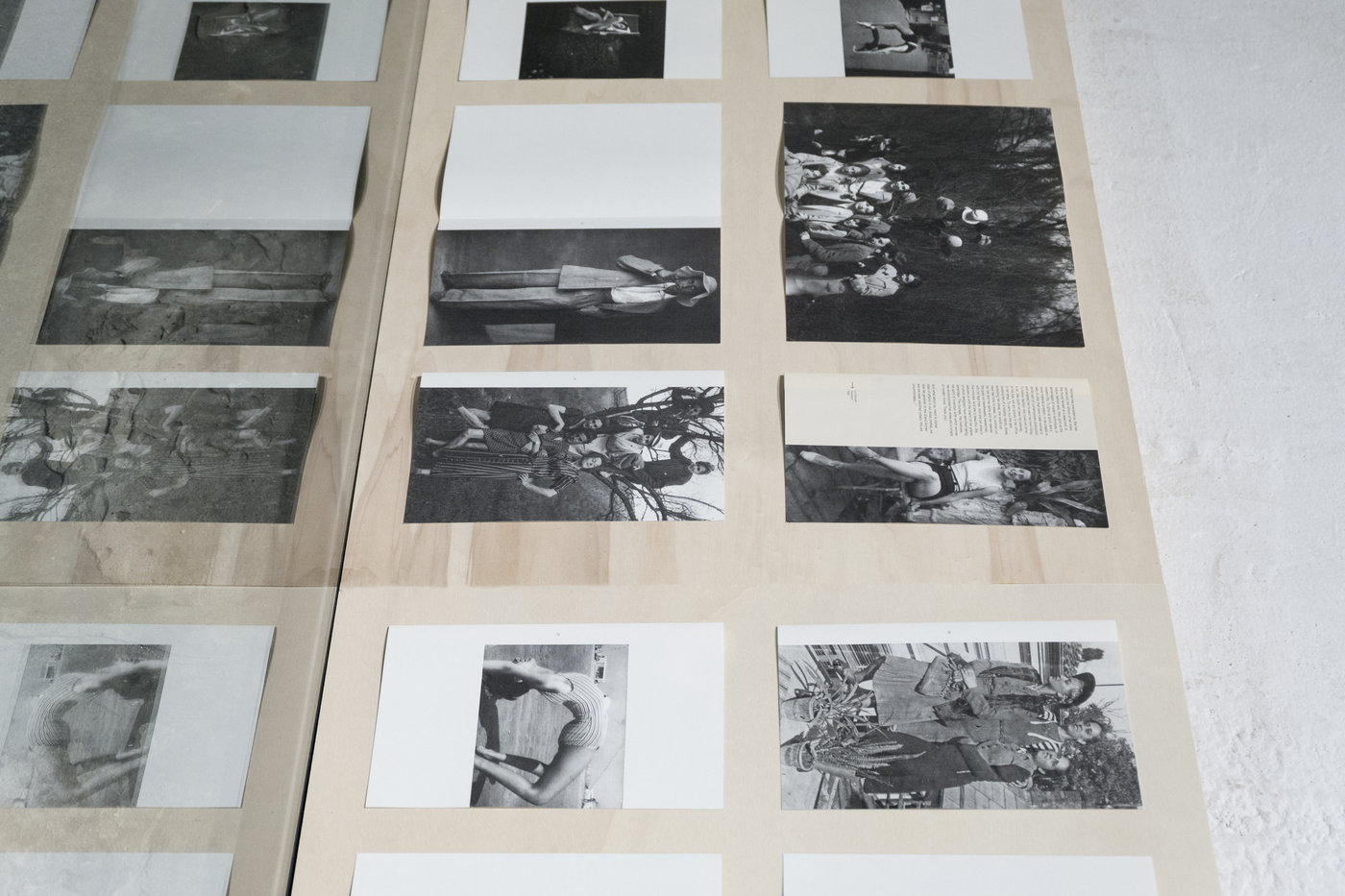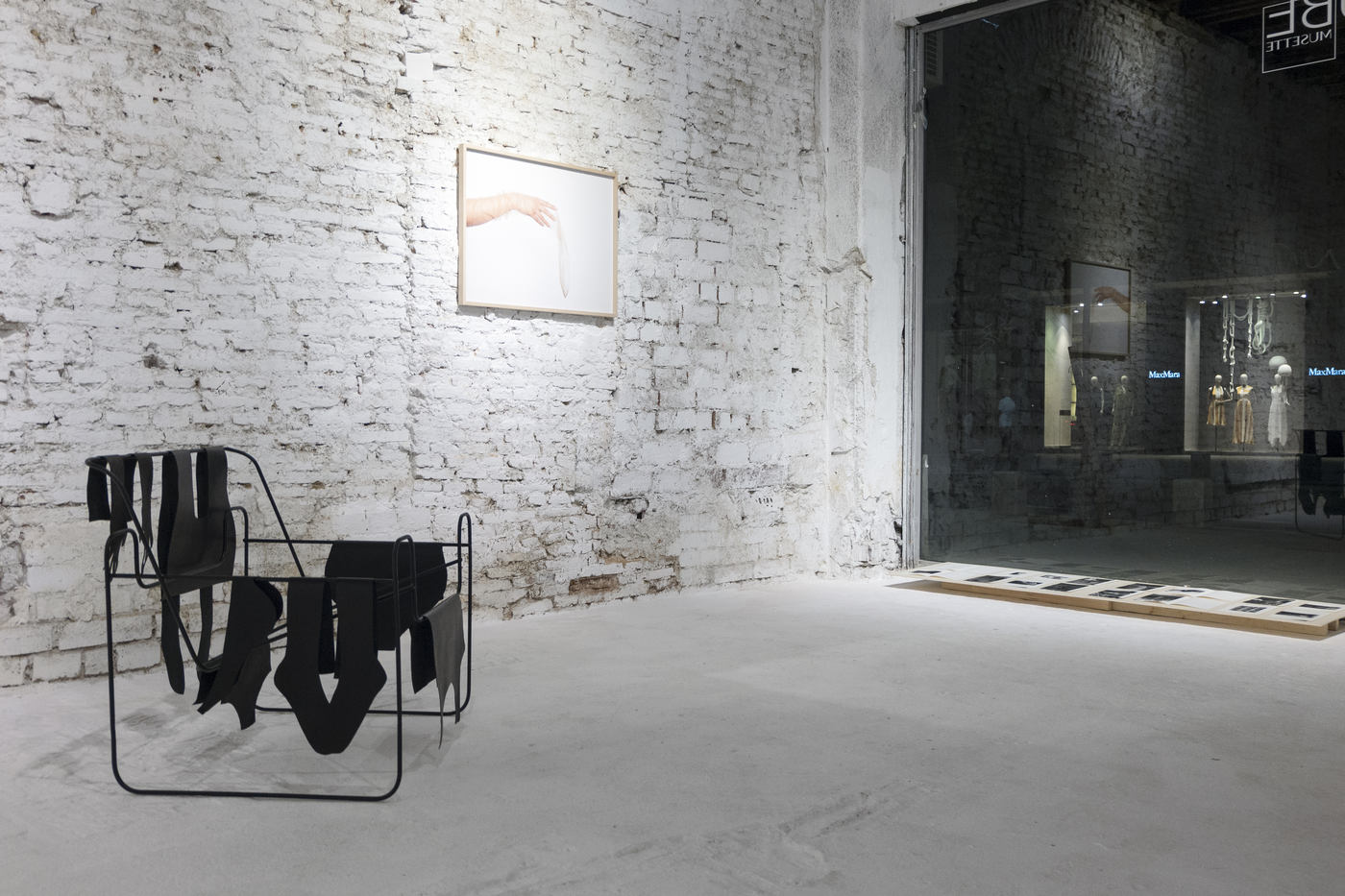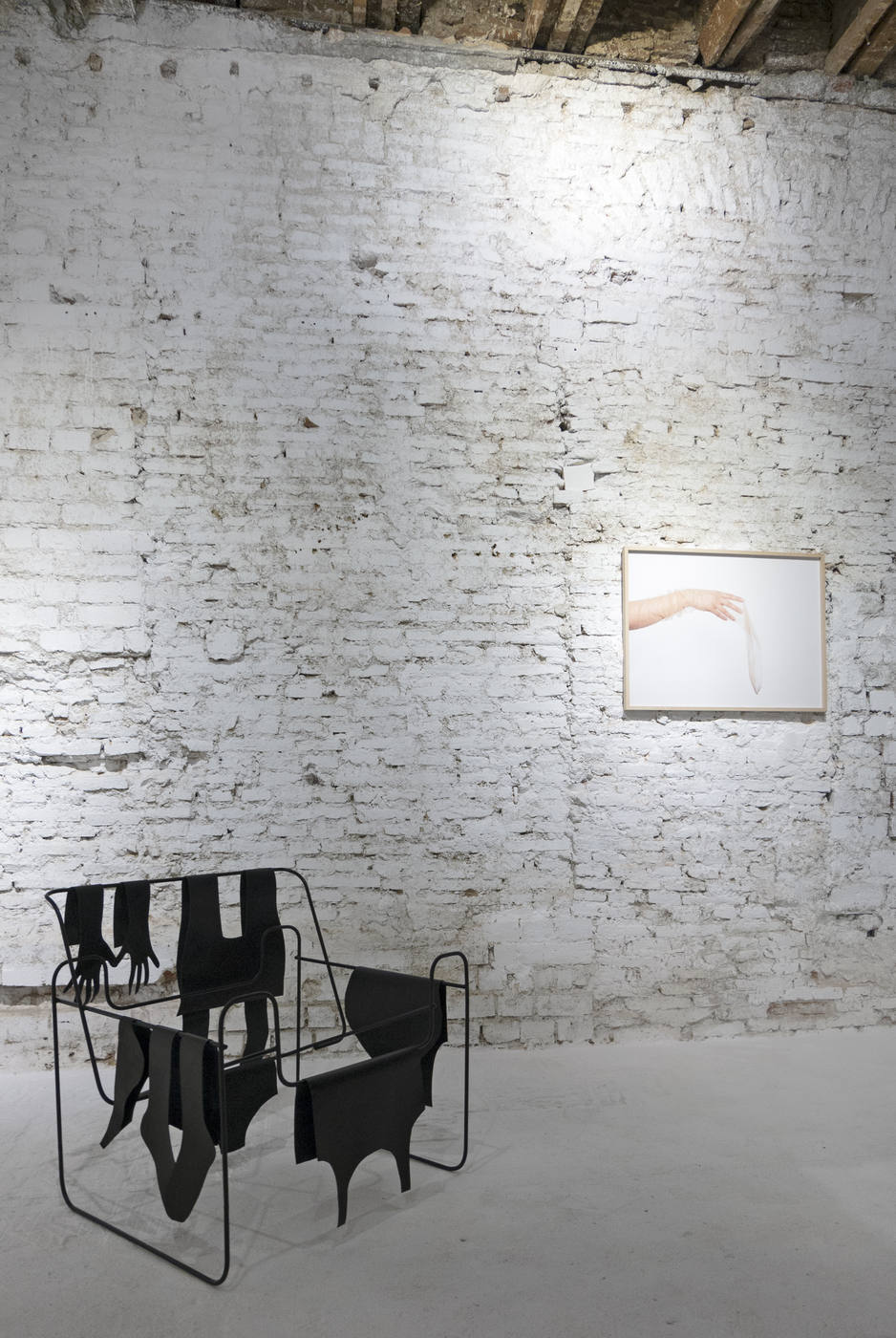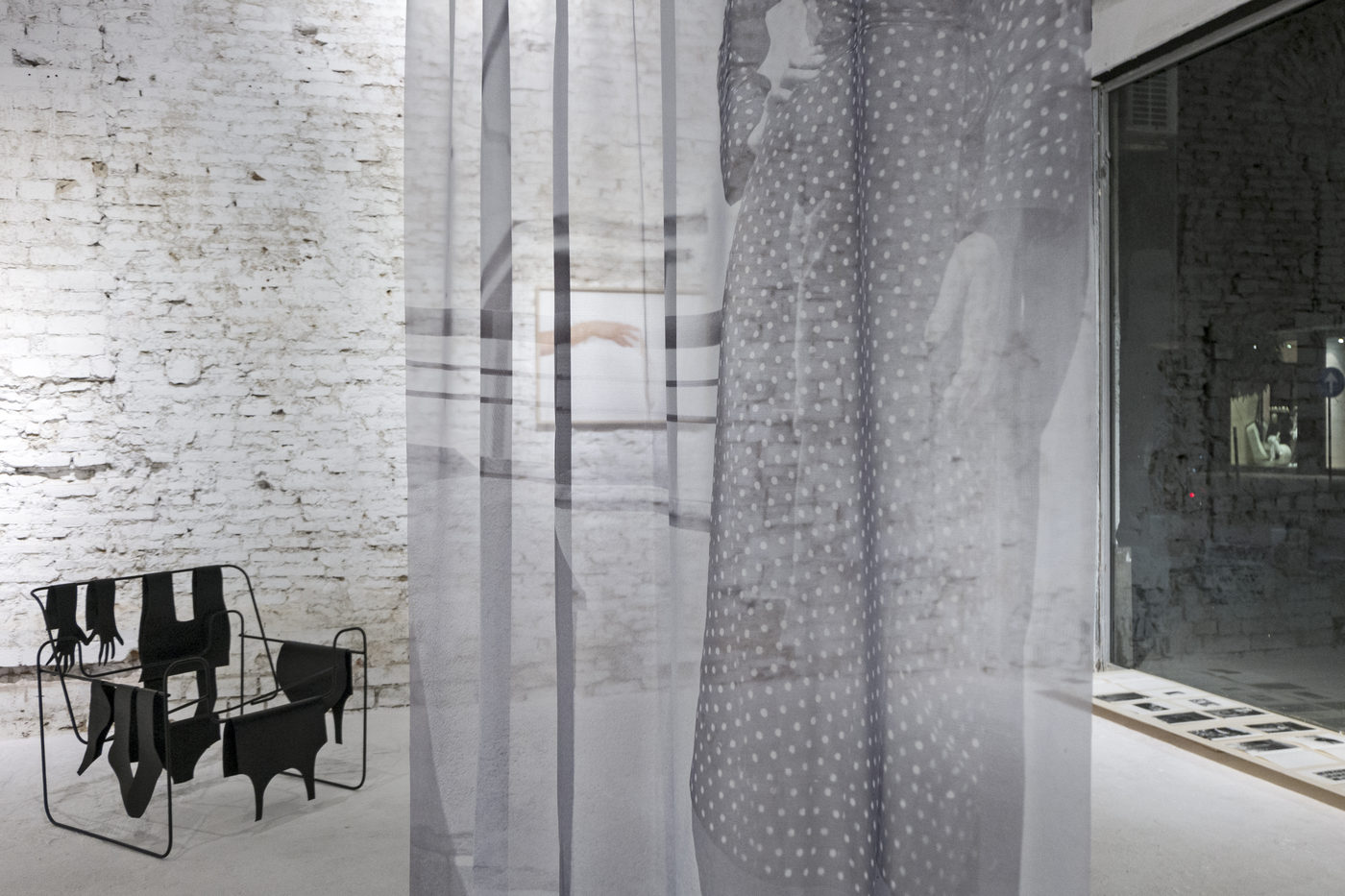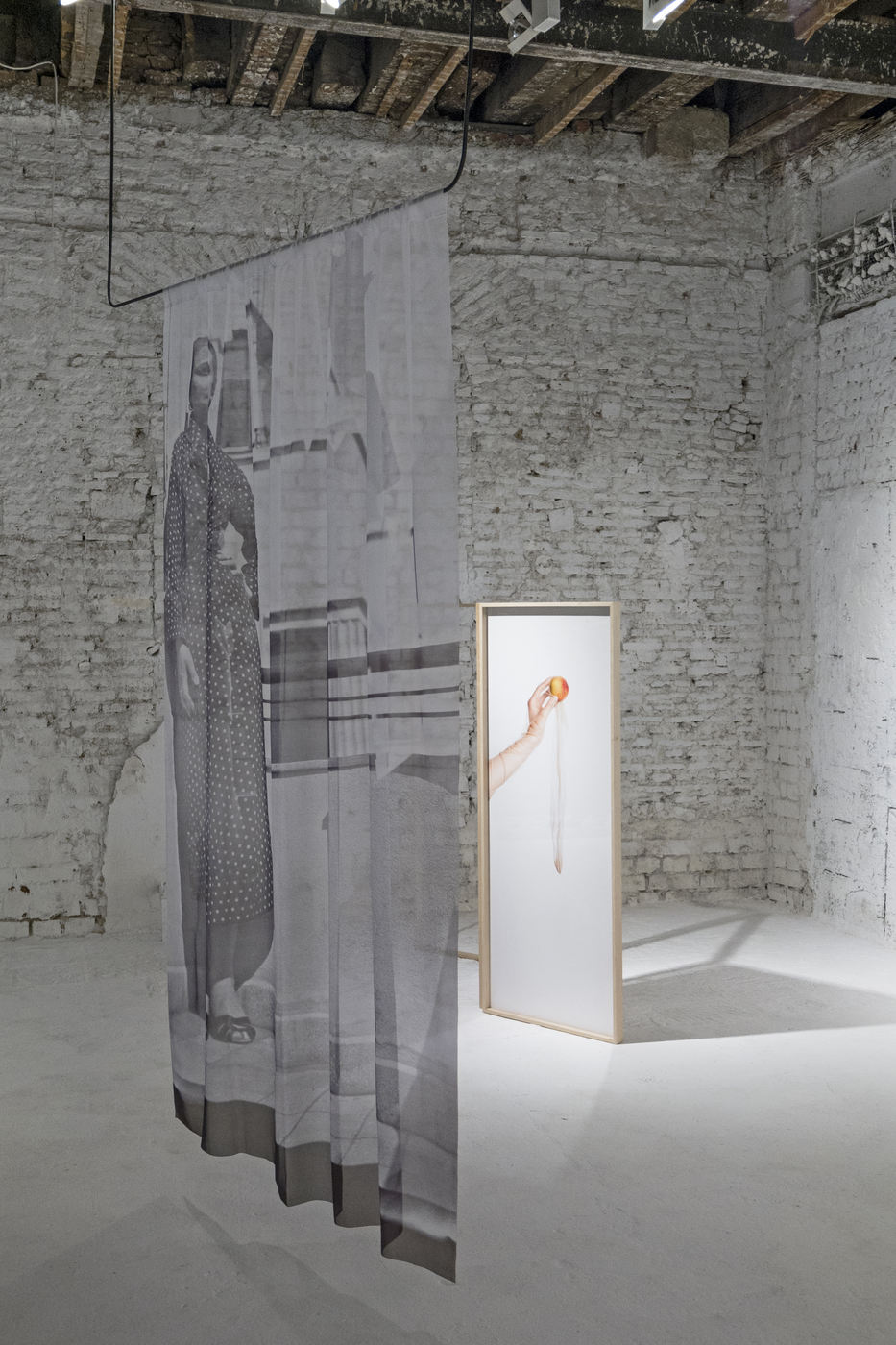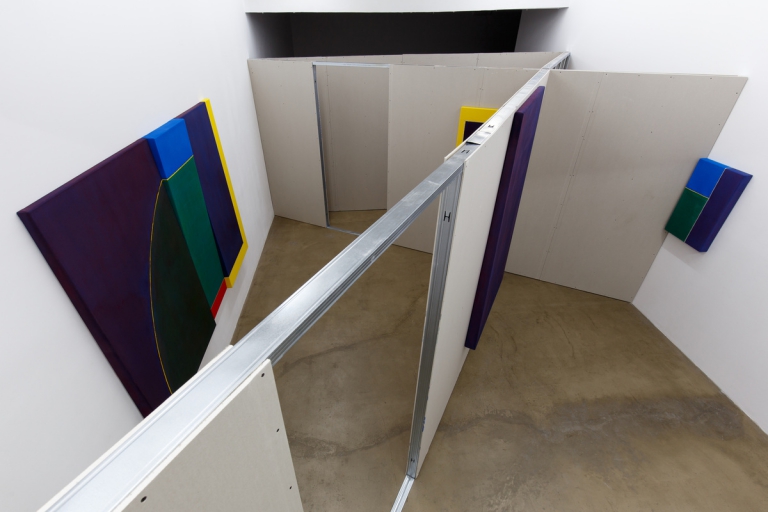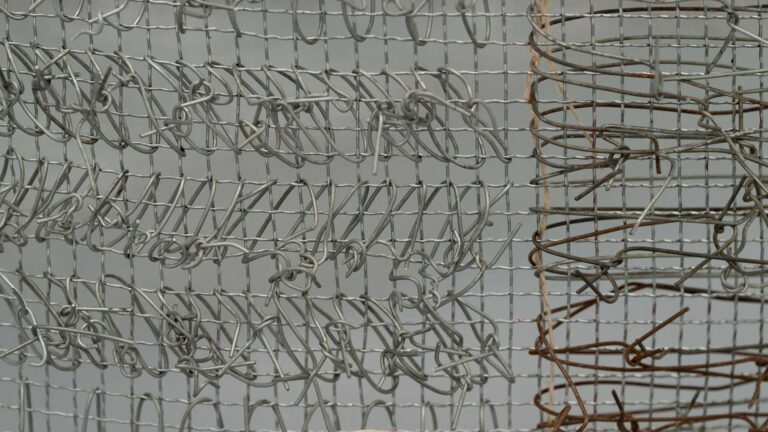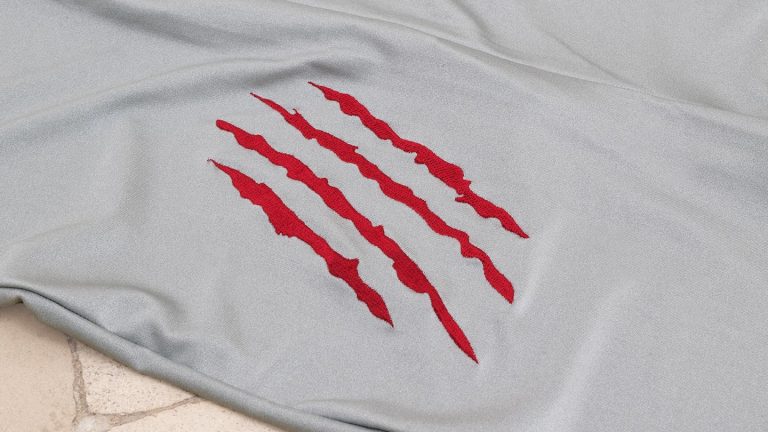Artist: Nona Inescu
Exhibition title: Her latent image
Venue: Kube Musette, Bucharest, Romania
Date: June 29 – July 4, 2016
Photography: all images copyright and courtesy the artist
As her latent image is being revealed, we see her on the balcony, wearing a robe with polka dots, posing with one arm bent on her hip.
Two other silhouettes are reflected in what seems to be a window of a modernist house in Bucharest. It is the year 1930. As we turn the page, we see her sleeping in the garden on a lounge chair, with her arm tucked around her head, revealing the armpit.
She is now awake, facing the camera, the lounge chair is inside a room, in front of a door.
She is joined by one friend, one of them is facing the camera while the other smiles. The black and white image is blurry.
We see her sitting on another balcony, she is wearing menswear, a striped suit.
She is posing with a pipe in her mouth, holding it in her right hand.
She is still wearing menswear but she kept a pretty hat on.
Later on, she is out with her friends, two other women and three men. They exchange clothing in a collective crossdressing gesture. It is the year 1944 and they say: “Due to the several bombings our sexes have changed…”.
She is wearing a tie, her hair is short and she is having a drink with a friend.
She is smoking a cigarette, leaning on her car.
She is doing sports.
She is dancing in her room, while the camera watches, recording her moves.
In 1930, Le Corbusier wrote: “Woman has preceded us. She has carried out the reform of her dress. She found herself at a dead end: to follow fashion and, then, give up the advantages of modern techniques, of modern life. To give up sport and, a more material problem, to be unable to take on the jobs that have made woman a fertile part of contemporary production and enabled her to earn her own living. To follow fashion: she could not drive a car; she could not take the subway, or the bus, nor act quickly in her office or her shop. To carry out the daily construction of a “toilette” : hairdo, shoes, buttoning her dress, she would not have had time to sleep. So, woman cut her hair and her skirts and her sleeves. She goes out bareheaded, bare armed, with her legs free. And she can dress in five minutes. And she is beautiful: she seduces her with the charm of her graces of which designers have admitted taking advantage. The courage, the liveliness, the spirit of invention with which woman has revolutionized her dress are a miracle of modern times. Thank you!
And what about us, men? A dismal state of affairs! In our dress clothes, we look like generals of the “Grand Armée” and we wear starched collars!
We are uncomfortable..” (Le Corbusier, Precisions, p. 106-107)

